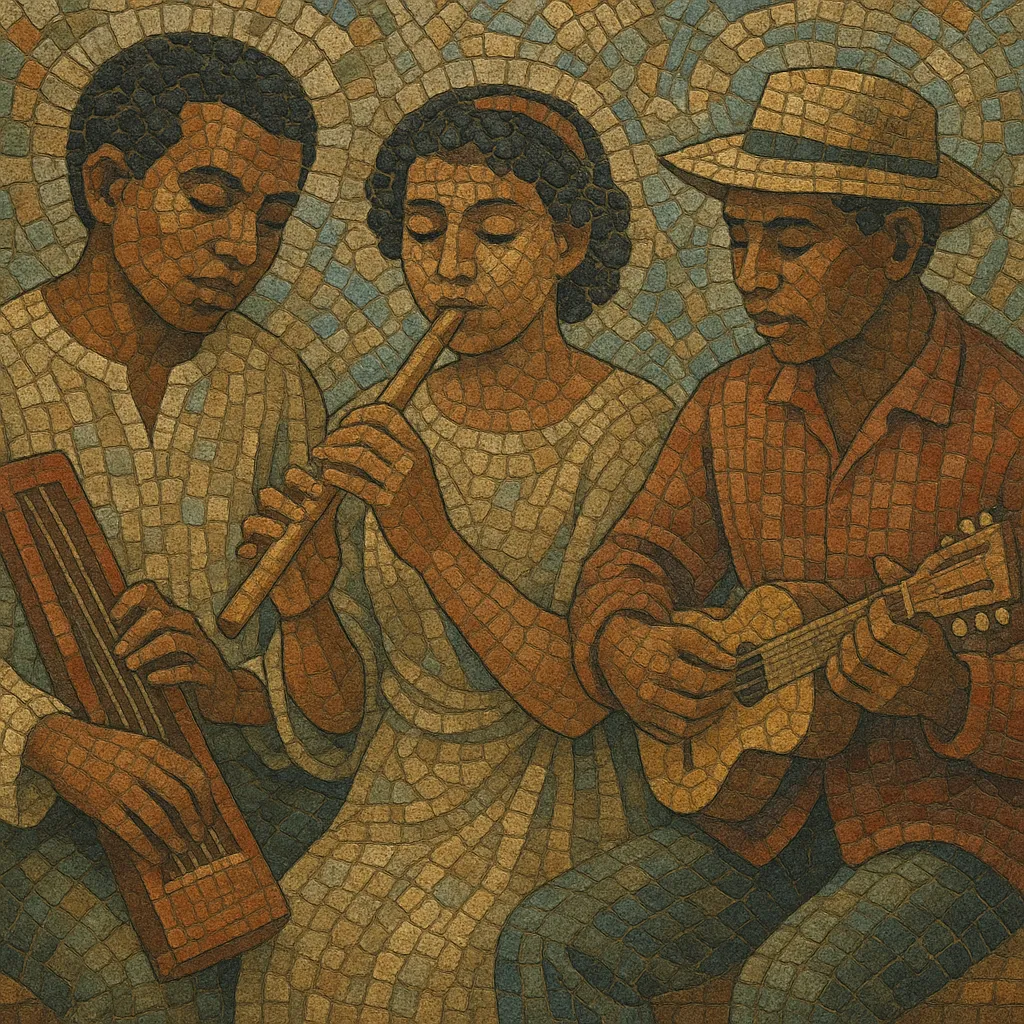
Kalon'ny fahiny (Malagasy for “the beauty of yesteryear”) refers to the canon of early urban Malagasy songs and popular airs that became standards in the mid-20th century, especially in the Central Highlands. Rather than a single rigid style, it is a repertoire that crystallized around highland instruments and European-influenced song forms.
Typical arrangements combine indigenous timbres (valiha and marovany zithers, sodina flute, kabosy box guitar, and unison or close-part vocals) with dance forms and harmonies inherited from the colonial era (waltz, mazurka, and polka). Melodies are often pentatonic or diatonic with graceful ornamentation, while the texts favor poetic themes of love, longing, social life, and nostalgia.
Kalon'ny fahiny emerged as urban Malagasy musical life expanded in the first half of the 20th century. Courtly and community traditions in the Central Highlands (Merina and Betsileo) already prized the valiha and marovany zithers, sodina flute, and choral singing. Under French colonial influence, European social dances (waltz, mazurka, and polka) and salon song forms entered local practice, blending with Malagasy melodic language and prosody.
With radio, 78 rpm discs, and later LPs, a shared repertoire of “evergreen” songs circulated widely. Ensembles began standardizing arrangements that paired Malagasy instruments (valiha, kabosy, sodina) with guitar, accordion, and voice. The result was a body of sentimental songs and elegant dance tunes that listeners came to call kalon'ny fahiny—literally the beloved songs of earlier times.
From the late 20th century onward, virtuosi and ensembles revisited the repertoire on national stages and international tours. Artists reissued archival recordings, staged tribute concerts, and created new arrangements that kept traditional timbres while updating harmony and form. Contemporary acoustic and world-fusion projects frequently draw on kalon'ny fahiny as a living source of Malagasy identity and musical craft.

